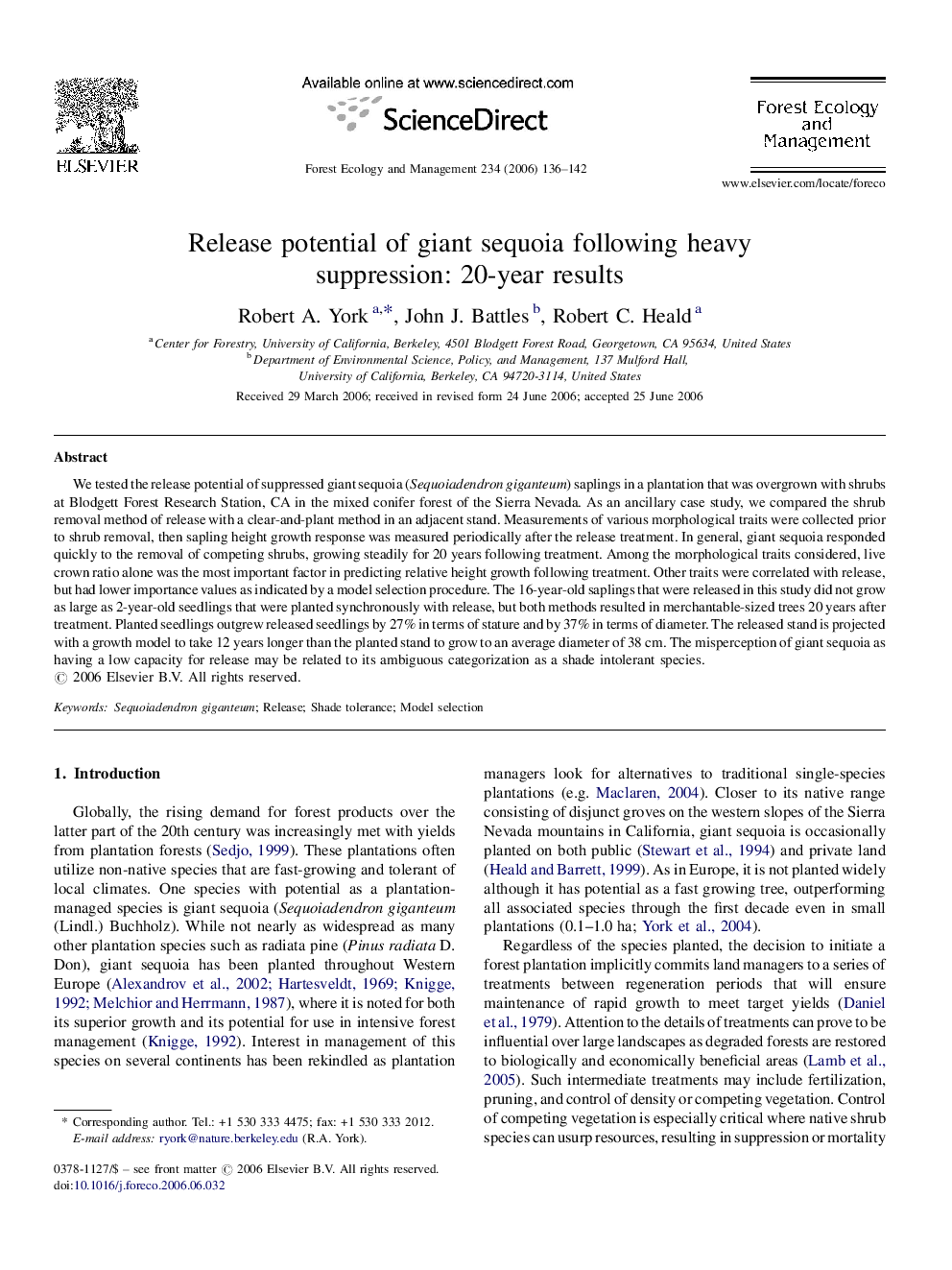| کد مقاله | کد نشریه | سال انتشار | مقاله انگلیسی | نسخه تمام متن |
|---|---|---|---|---|
| 90200 | 159372 | 2006 | 7 صفحه PDF | دانلود رایگان |

We tested the release potential of suppressed giant sequoia (Sequoiadendron giganteum) saplings in a plantation that was overgrown with shrubs at Blodgett Forest Research Station, CA in the mixed conifer forest of the Sierra Nevada. As an ancillary case study, we compared the shrub removal method of release with a clear-and-plant method in an adjacent stand. Measurements of various morphological traits were collected prior to shrub removal, then sapling height growth response was measured periodically after the release treatment. In general, giant sequoia responded quickly to the removal of competing shrubs, growing steadily for 20 years following treatment. Among the morphological traits considered, live crown ratio alone was the most important factor in predicting relative height growth following treatment. Other traits were correlated with release, but had lower importance values as indicated by a model selection procedure. The 16-year-old saplings that were released in this study did not grow as large as 2-year-old seedlings that were planted synchronously with release, but both methods resulted in merchantable-sized trees 20 years after treatment. Planted seedlings outgrew released seedlings by 27% in terms of stature and by 37% in terms of diameter. The released stand is projected with a growth model to take 12 years longer than the planted stand to grow to an average diameter of 38 cm. The misperception of giant sequoia as having a low capacity for release may be related to its ambiguous categorization as a shade intolerant species.
Journal: Forest Ecology and Management - Volume 234, Issues 1–3, 1 October 2006, Pages 136–142